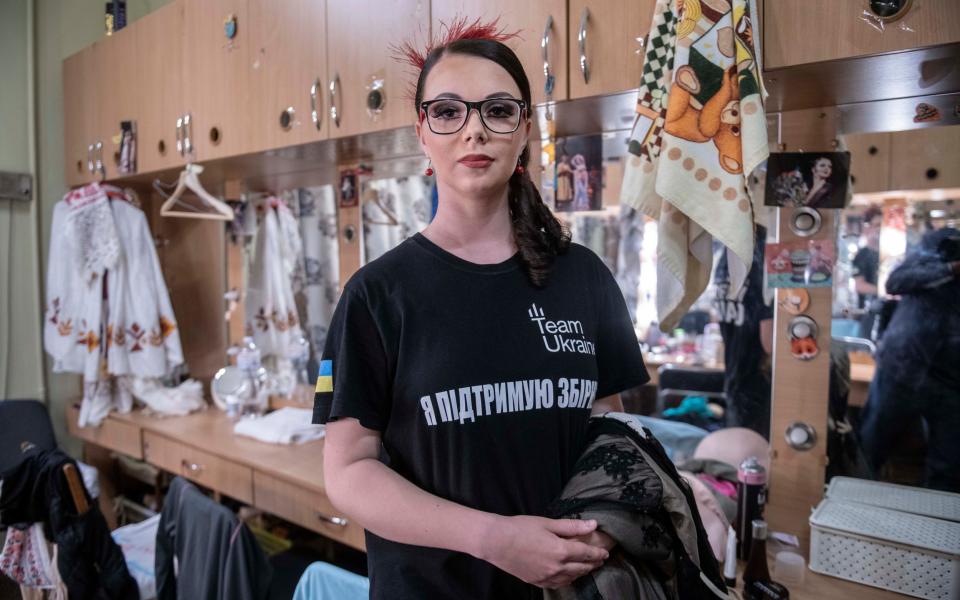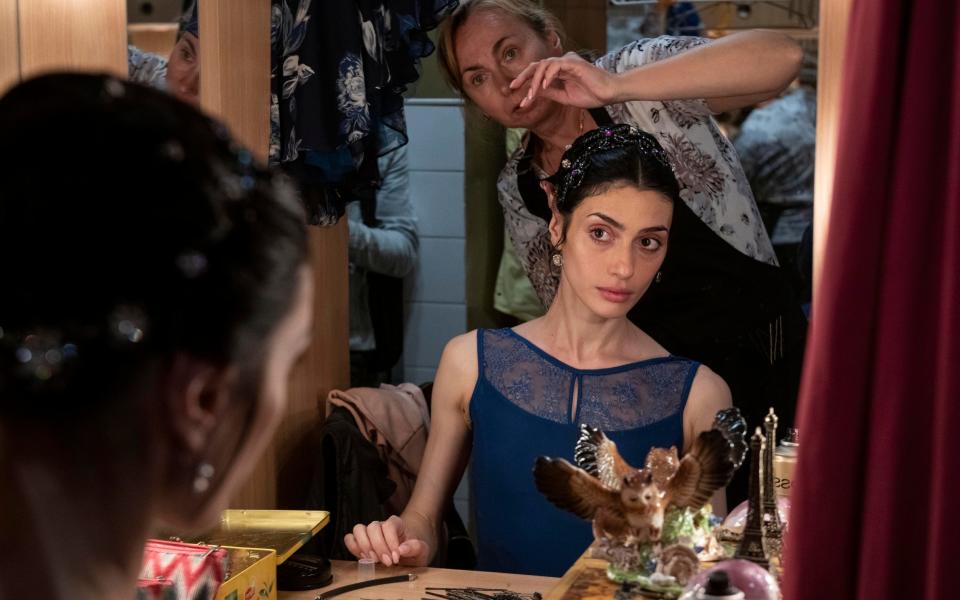The Ukrainian ballerina who dances by night and fights Russians by day

Judging by the rapturous applause, the audience did not notice anything was amiss. But if the ballet dancers at the Strauss premiere at Kyiv’s National Opera House did not quite come up to their director’s usual exacting standards, they could perhaps be forgiven.
Friday’s performance was the first many had done since the Russian invasion of Ukraine four months ago, during which few had the chance to put in time at the barre.
Ballerina Olesya Vorotnyuk, for example, has become more used to wearing army boots than dancing shoes, having volunteered with her local territorial defence unit. And as she told The Telegraph ahead of taking to the stage, dancing in wartime required a new level of grace under pressure.
“This is my first performance since the war. It is very hard physically, because for the last three months I did no training, and it is also hard mentally because the war still is going,” she said. “But this is all part of our work to help the people of Ukraine feel better.”

Friday’s performance in the 150-year-old opera house was yet another sign of how life in the Ukrainian capital is gradually returning to normal, despite Russian forces continuing to occasionally missile the city. Shops have reopened, parks are full of sunbathers, and bars and restaurants are busy – up until an 11pm curfew.
At the opera house, only 300 spectators are currently allowed into the 1,700-seat venue, in case an emergency evacuation has to be done during an air raid. Yet veteran director Victor Litvinov, 74, who was in charge of Friday’s performance – a medley called “We dance Strauss” – was delighted to be back in showbusiness.
“Everybody likes to feel needed, and to have purpose,” he said.
Built in neo-Renaissance style when Ukraine was under Czarist rule, the Kyiv Opera House was one of the premiere art venues of the Russian empire, ranking alongside the Bolshoi in Moscow.
In 1911 it saw high drama offstage when a Russian prime minister, Pyotr Arkadyevich Stolypin, was assassinated during a performance. His killer, a Jewish leftist revolutionary, shot him after his bodyguard stepped out to smoke. When the Bolsheviks took over, there were calls for the Opera House to be abolished as an elitist institution, but it survived to become a much-loved cultural landmark. In the wake of Vladimir Putin’s invasion, its artistic directors have introduced a boycott on performances in Russian.

Ms Vorotnyuk was not the only ballerina who found Friday’s performance a challenge. The lead ballerina, Raisa Betancourt, suffered a leg injury in a performance two weeks ago – again, put down to lack of training opportunities in the months before.
After finishing dancing to Strauss’s Blue Danube Waltz, the performers gathered for a curtain call with Mr Litvinov, a former dancer himself, and clearly a demanding taskmaster.
His verdict on their first night? Not quite perfect yet, but very good for a first run.
“It is never possible that everything was perfect,” he beamed. “But generally I am very happy.”

 Yahoo Movies
Yahoo Movies 